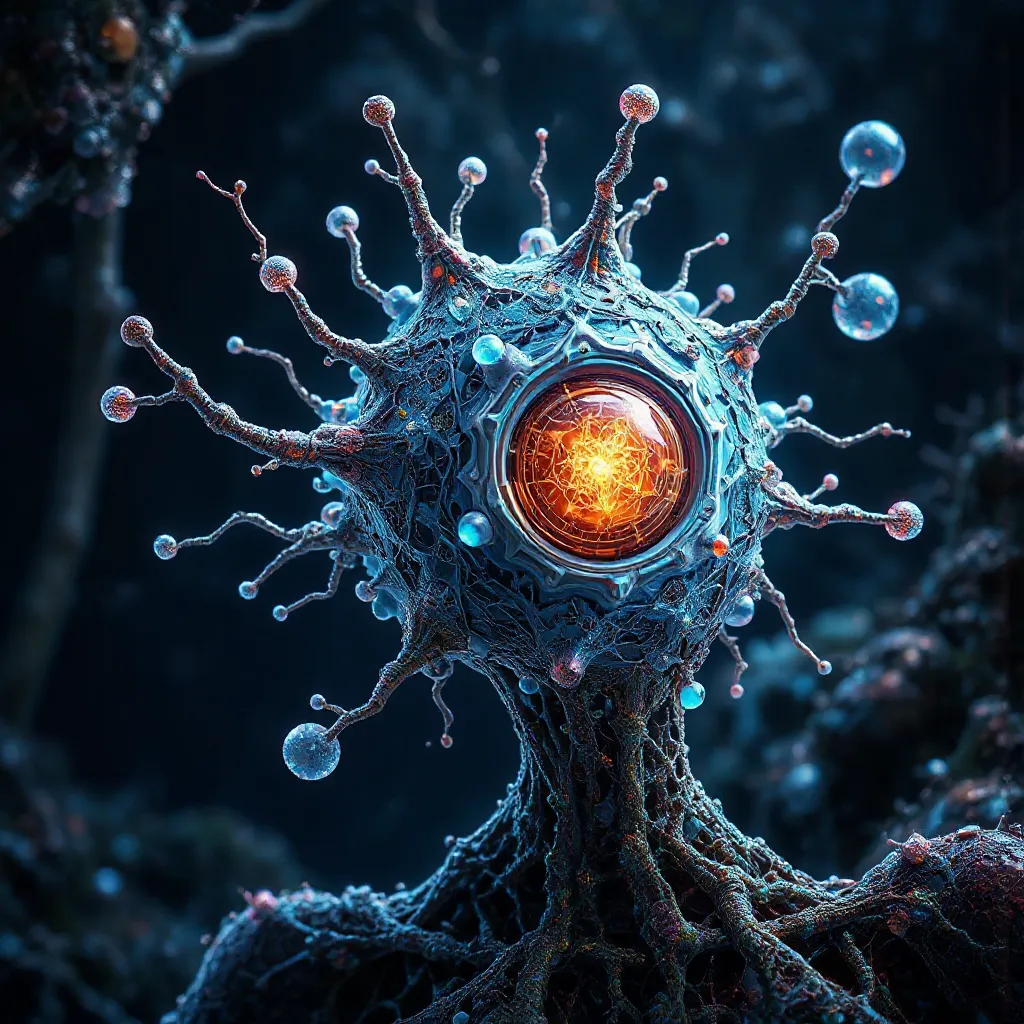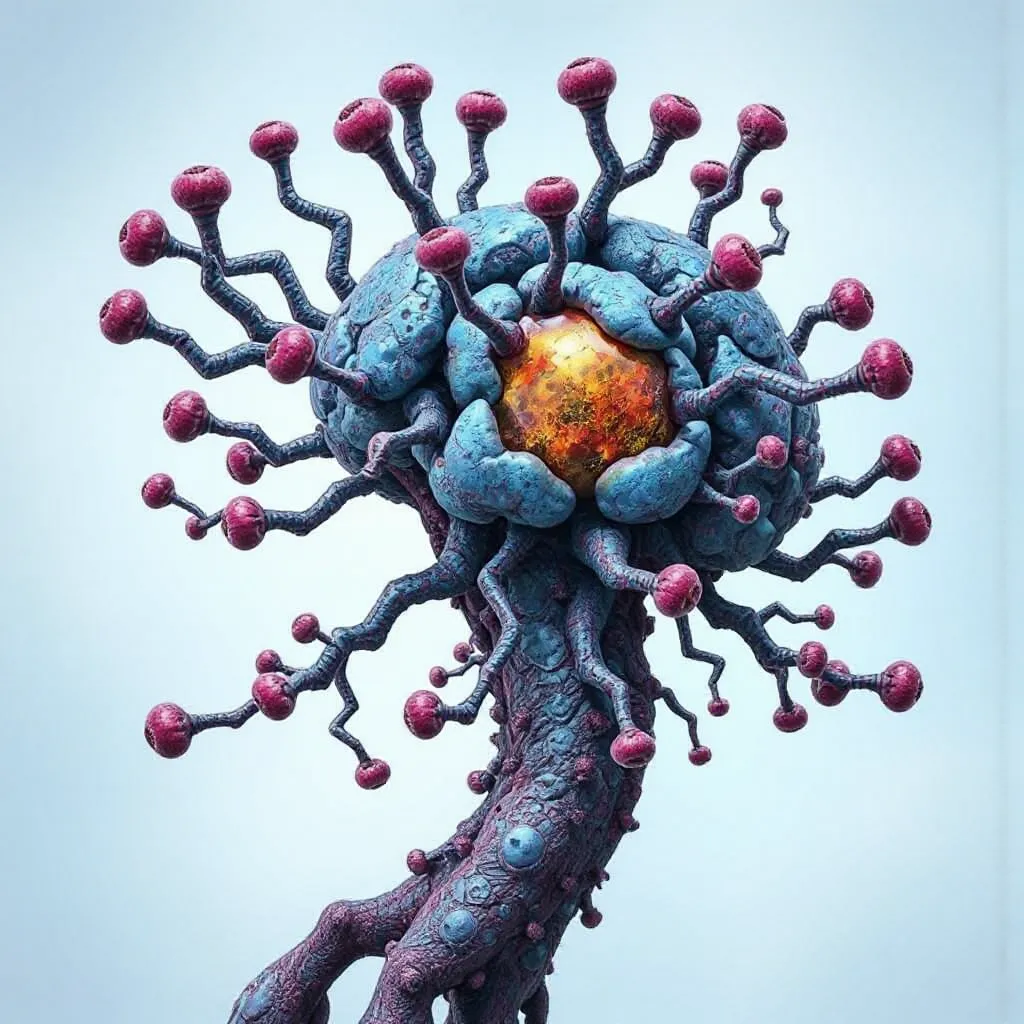Schwannoma Explained: Key Facts You Should Know

Schwannomas are tumors that develop from Schwann cells, which protect and insulate your peripheral nerves. These tumors grow slowly and usually remain benign. In fact, studies show that about 77.8% of Schwannomas are non-cancerous, while only 22.2% are malignant. Schwannomas can appear in different parts of your body, often near cranial or spinal nerves. Vestibular Schwannomas, for example, affect approximately 1 in 100,000 people annually, while Schwannomatosis is rarer, occurring in about 1 in 40,000 individuals. Understanding these tumors can help you recognize their symptoms and seek timely care.
Key Takeaways
Schwannomas are usually harmless growths that come from Schwann cells. About 77.8% are not cancerous.
Noticing signs like pain, numbness, or bumps can help find them early. Early treatment works better.
Changes in genes, like the NF2 gene, can raise the chance of getting Schwannomas. Family history is important too.
Surgery is the best way to treat Schwannomas. It often leads to full healing and a better life.
Regular check-ups are key to managing Schwannomas. They help catch problems early if they happen.
What is a Schwannoma?

Definition and Origin
A Schwannoma is a tumor that develops from Schwann cells, which are responsible for insulating and protecting your peripheral nerves. These tumors are usually benign and grow slowly. The formation of Schwannomas is closely linked to the loss of function of a protein called merlin, encoded by the NF2 gene. This loss disrupts the cytoskeleton and signaling pathways, leading to tumor development. Unlike other nerve sheath tumors, Schwannomas are well-circumscribed and encapsulated. They also exhibit unique histological patterns, known as Antoni A and Antoni B, and consist solely of Schwann cells.
Types of Schwannomas
Schwannomas can vary based on their location and characteristics. Here’s a breakdown of the most common types:
Type of Schwannoma | Description | Incidence Rate |
|---|---|---|
Vestibular Schwannomas | Arise from the nerve connecting the inner ear to the brain, often causing hearing loss. | |
Spinal Schwannomas | Develop within the spinal canal, leading to nerve compression symptoms. | Less common than vestibular schwannomas |
Schwannomatosis | A rare condition with multiple Schwannomas throughout the nervous system, excluding the vestibular nerve. | About 1 in 40,000 individuals |
Neurofibromatosis Type 2 (NF2) | A genetic disorder that increases the likelihood of multiple tumors, including Schwannomas. | 1 in 25,000 to 1 in 40,000 births |
Common Locations
Schwannomas can occur in various parts of your body. They frequently affect small peripheral nerves in the head and neck regions. You might also find them on the flexor surfaces of your arms and legs. Central lesions often arise from sensory nerve roots, while intracranial Schwannomas commonly involve the vestibular branch of the eighth cranial nerve. Other affected nerves include the trigeminal nerve and lower cranial nerves, especially in cases of Neurofibromatosis Type 2. Rarely, Schwannomas may appear in visceral organs or the gastrointestinal tract, such as the stomach.
Characteristics of Schwannomas
Benign vs. Malignant Schwannomas
Schwannomas are typically benign, but some can become malignant. Understanding the differences between these forms helps you recognize their behavior and treatment needs. The table below highlights key distinctions:
Characteristic | Benign Schwannomas | Malignant Schwannomas |
|---|---|---|
Average Duration to Diagnosis | 28.5 ± 25.3 months | 8.3 ± 4.3 months |
Well-defined Margins | 13 out of 14 (92.9%) | 1 out of 4 (25%) |
Sclerotic Margin Ratio | 75.5% | 16.7% |
Treatment Approach | Curettage and bone grafting | Extensive resection or amputation |
Benign Schwannomas grow slowly and often remain localized. Malignant ones, however, progress rapidly and may require aggressive treatment.
Growth Patterns
Schwannomas exhibit varied growth patterns. Some remain stable for years, while others grow at different rates. Research findings provide insights into these patterns:
Study | Findings |
|---|---|
Bakkouri et al, 2009 | 36.9% risk of growth in the first year; 64.6% in 2 years; mean growth rate of 1.15 mm/year. |
Martin et al, 2009 | 22% of patients showed growth; 65% of growing tumors grew slowly. |
Ferri et al, 2008 | 64.5% showed no increase in size; 45.4% of growing tumors grew within the first year. |
Solares et al, 2008 | 70.6% 5-year no growth rate overall; 10% of tumors regressed. |
Most Schwannomas grow slowly, with many showing no significant size increase over time.
Symptoms Based on Location
The symptoms of a Schwannoma depend on its location in your body. You might experience:
A visible or palpable lump near the skin.
Pain, either intermittent or constant, in the affected area.
Numbness or tingling sensations along the affected nerve.
Loss of sensation or muscle weakness.
Dizziness, balance issues, or hearing loss if the tumor affects cranial nerves.
These symptoms vary widely, so early recognition can help you seek timely care.
Causes and Risk Factors of Schwannomas
Genetic Causes
Genetic mutations play a significant role in the development of Schwannomas. Some of these mutations are inherited, while others occur spontaneously. You may encounter the following genetic factors:
NF2: This mutation is linked to Neurofibromatosis Type 2, a condition that causes multiple Schwannomas and other tumors like meningiomas.
SMARCB1: Mutations in this gene are common in individuals with schwannomatosis. These mutations may also contribute to other tumor types.
LZTR1: Loss of function mutations in this gene often appear in schwannomatosis patients who lack SMARCB1 mutations.
If you have a family history of these genetic conditions, your risk of developing Schwannomas may increase. Genetic testing can help identify these mutations and guide early intervention.
Risk Factors
Several factors may raise your chances of developing a Schwannoma. While genetic mutations are a primary cause, other influences can also play a role:
Family History: If close relatives have conditions like Neurofibromatosis Type 2 or schwannomatosis, your risk may be higher.
Age: Schwannomas often appear in adults between the ages of 30 and 60.
Radiation Exposure: Past exposure to radiation, especially near the head or neck, may increase your likelihood of developing these tumors.
Occupation: Jobs involving prolonged exposure to certain chemicals or toxins might contribute to tumor formation.
Tip: If you notice symptoms like persistent pain, numbness, or a lump, consult a healthcare provider. Early diagnosis can improve treatment outcomes.
Understanding these causes and risk factors can help you stay informed and proactive about your health.
Symptoms of Schwannomas
General Symptoms
Schwannomas can cause a variety of symptoms depending on their size and location. You might notice pain that comes and goes or remains constant in the area where the tumor is located. Some people experience numbness or tingling sensations along the affected nerve. Muscle weakness or changes in reflexes may also occur. If the tumor presses on nearby structures, you could feel a sharp, aching, or burning pain.
In some cases, Schwannomas cause visible lumps under the skin. These lumps may feel tender or cause discomfort when touched. Other symptoms include a pins-and-needles sensation, nighttime pain in the back or neck, or even dizziness and balance problems. If the tumor affects your hearing, you might experience hearing loss or ringing in your ears.
Note: These symptoms can overlap with other conditions. If you notice persistent pain, numbness, or a lump, consult a healthcare provider for evaluation.
Location-Specific Symptoms
The symptoms of a Schwannoma often depend on its location in your body. Tumors near cranial nerves, such as vestibular Schwannomas, can lead to hearing loss, balance issues, or ringing in the ears. If the tumor affects the spinal nerves, you might feel pain radiating down your arms or legs. This pain could be accompanied by muscle weakness or difficulty moving certain parts of your body.
Schwannomas in the peripheral nerves may cause localized pain, numbness, or a visible lump. Tumors in the head or neck region can sometimes interfere with swallowing or speaking. Rarely, Schwannomas in the gastrointestinal tract may cause abdominal discomfort or other digestive symptoms.
Understanding these location-specific symptoms can help you identify potential warning signs early. Early diagnosis improves treatment outcomes and helps prevent complications.
Diagnosis of Schwannomas
Medical History and Physical Exam
Diagnosing a Schwannoma begins with your medical history and a physical exam. Your doctor will ask about your symptoms, including pain, numbness, or muscle weakness. They may also inquire about any family history of genetic conditions like Neurofibromatosis Type 2. During the physical exam, the doctor will check for visible lumps, tenderness, or changes in sensation. They might test your reflexes and muscle strength to assess nerve function. This initial step helps identify potential nerve-related issues and guides further diagnostic testing.
Imaging Tests
Imaging tests play a crucial role in confirming the presence of a Schwannoma. Advanced techniques like MRI and CT scans provide detailed images of the tumor and surrounding tissues. Among these, MRI is the most effective. It uses specialized sequences to detect even small tumors with high accuracy. The table below highlights the sensitivity and specificity of common imaging techniques:
Imaging Technique | Sensitivity (%) | Specificity (%) | Notes |
|---|---|---|---|
3D T2 CISS | 94-100 | 94-98 | High sensitivity and specificity for tumor detection. |
3D T1 MPRAGE postcontrast | 94-100 | 94-98 | Excellent for preoperative identification of vestibular Schwannomas. |
Standard T1, T2, DWI, FLAIR | 96-100 | 88-93 | Provides high sensitivity; FLAIR is an adjunct technique. |
T2 sequences | 89-94 | 94-97 | Identifies microhemorrhage as an adjunctive sign. |
3D T2 techniques | N/A | N/A | Helps identify nerve of origin and extent of involvement. |
MRI with 3D T2 CISS or 3D T1 MPRAGE postcontrast sequences offers exceptional precision. These methods help doctors locate the tumor, determine its size, and plan treatment effectively.
Biopsy
In some cases, your doctor may recommend a biopsy to confirm the diagnosis. This involves removing a small sample of the tumor tissue for analysis under a microscope. A biopsy helps distinguish a Schwannoma from other types of tumors. It also determines whether the tumor is benign or malignant. Doctors often use imaging guidance, such as ultrasound or CT, to ensure accurate sampling. While biopsies are not always necessary, they provide valuable information for tailoring your treatment plan.
Treatment Options for Schwannomas

Observation
For small Schwannomas that do not cause symptoms, observation may be the best approach. Doctors often recommend regular MRI scans to monitor the tumor's size and growth. This "watchful waiting" strategy works well when the tumor is stable and poses no immediate risks. You can avoid invasive procedures while keeping a close eye on any changes. If the tumor begins to grow or causes symptoms, your doctor may suggest other treatment options.
Tip: Regular follow-ups are essential during observation. They help detect changes early and guide timely intervention.
Surgical Removal
Surgical removal remains the most effective treatment for Schwannomas. Surgeons aim to completely remove the tumor while preserving nerve function. Early detection improves the chances of a successful outcome. Most patients achieve a full recovery after surgery, with the tumor completely removed.
Extent of Resection | Rate of Optimal HB (Grades 1 and 2) |
|---|---|
NTR | |
STR | 80% |
PR | 100% |
The prognosis is excellent when the tumor is accessible and removed entirely. Surgery often cures the condition, allowing you to return to normal activities.
Non-Surgical Treatments
Non-surgical treatments offer alternatives for those who cannot undergo surgery. Stereotactic radiosurgery delivers targeted radiation to shrink the tumor while minimizing damage to surrounding tissues. Medications like pain relievers and corticosteroids can help manage symptoms.
Recent advancements in medical research have introduced promising therapies. Two drugs, VT1 and VT2, have shown the ability to halt tumor growth and even reduce its size. These options provide hope for patients seeking less invasive treatments.
Note: Non-surgical treatments are especially useful for small tumors or when surgery poses significant risks.
Prognosis and Outlook for Schwannomas
Typical Outcomes
The prognosis for Schwannomas is generally excellent, especially when detected early. Most Schwannomas are benign and respond well to treatment. Surgical removal often leads to a complete cure, particularly when the tumor is accessible and does not involve critical structures. You can expect a high survival rate, as these tumors rarely become life-threatening.
However, challenges may arise if the tumor impacts nerve function or cannot be entirely removed. In such cases, managing symptoms and preventing complications become the focus. Regular follow-ups and imaging tests help monitor the tumor and ensure timely intervention if needed.
Tip: Early detection and treatment significantly improve outcomes, so consult a healthcare provider if you notice persistent symptoms.
Malignant Schwannomas
Malignant Schwannomas, though rare, present a more complex prognosis. These tumors grow aggressively and have a higher risk of recurrence and metastasis. Treatment often involves a combination of surgery, radiation, and chemotherapy.
Benign Schwannomas | Malignant Schwannomas | |
|---|---|---|
Aggressiveness | Less aggressive | More aggressive |
Risk of Recurrence | Lower risk | Higher risk |
Metastasis | Rarely metastasizes | More likely to metastasize |
Treatment | Surgical removal often curative | Requires surgery, radiation, chemotherapy |
While benign Schwannomas have an excellent prognosis, malignant ones require more intensive treatment and careful monitoring. Early diagnosis remains crucial for improving survival rates and reducing complications.
Quality of Life After Treatment
Most individuals with Schwannomas enjoy a good quality of life after treatment. Surgical removal often restores normal nerve function, allowing you to return to daily activities. However, some cases may result in residual symptoms like mild numbness or weakness, depending on the tumor's location and size.
Recurrence rates vary based on the extent of tumor removal. For instance, studies show that gross total resection (GTR) has a recurrence rate of only 2.4%, while partial resection (PR) has a much higher rate of 62.5%. Regular follow-ups and rehabilitation therapies can help manage any lingering effects and improve your overall well-being.
Note: Maintaining a healthy lifestyle and attending follow-up appointments are essential for long-term recovery and monitoring.
Schwannomas are treatable, and most cases have excellent outcomes. Early diagnosis and treatment significantly improve recovery and quality of life. For example, patients who undergo radiosurgery achieve a 99% tumor control rate over eight years, compared to 33% for non-radiosurgery patients. Radiosurgery also reduces tinnitus by 54% and lowers cranial nerve deterioration by 51%. These benefits highlight the importance of timely intervention. With proper care, you can manage symptoms effectively and return to a healthy, normal life.
Benefit | Radiosurgery Patients | Non-Radiosurgery Patients |
|---|---|---|
Tumor Control Rate (3 years) | 99% | 63% |
Tumor Control Rate (5 years) | 99% | 50% |
Tumor Control Rate (8 years) | 99% | 33% |
Rate of Tinnitus Reduction | 54% lower | N/A |
Rate of Cranial Nerve Deterioration | 51% lower | N/A |
Rate of Vestibular Dysfunction | 83% lower | N/A |
Tip: Regular check-ups and early treatment ensure the best outcomes for Schwannoma patients.
FAQ
What is the difference between a Schwannoma and a Neurofibroma?
Schwannomas consist only of Schwann cells, while neurofibromas contain multiple cell types. Schwannomas are usually encapsulated and easier to remove surgically. Neurofibromas often infiltrate nerves, making removal more challenging.
Can Schwannomas turn into cancer?
Most Schwannomas remain benign. However, a small percentage can become malignant, especially in individuals with genetic conditions like Neurofibromatosis Type 2. Regular monitoring helps detect changes early.
How do doctors decide on treatment for Schwannomas?
Doctors consider the tumor's size, location, and symptoms. Small, asymptomatic tumors may only need observation. Symptomatic or growing tumors often require surgery or other treatments like radiosurgery.
Are Schwannomas hereditary?
Some Schwannomas result from inherited genetic mutations, such as those in Neurofibromatosis Type 2 or schwannomatosis. However, many occur sporadically without a family history. Genetic testing can help assess your risk.
Can Schwannomas come back after treatment?
Recurrence depends on the extent of tumor removal. Complete surgical removal has a low recurrence rate. Partial removal increases the likelihood of the tumor returning. Regular follow-ups ensure early detection of any recurrence.
Tip: If you suspect a Schwannoma, consult a healthcare provider promptly. Early diagnosis improves outcomes and simplifies treatment.
See Also
Essential Insights About Ganglioneuroma You Need To Understand
Key Characteristics Of Glioblastoma You Should Be Aware Of
Important Features Of Hemangioblastoma To Familiarize Yourself With
